What Have We Learned About Pluto?
What Have We Learned About Pluto?
This month (March 2016), in the journal Science, New Horizons scientists have authored the first comprehensive set of papers describing results from last summer’s Pluto system flyby. These detailed papers completely transform our view of Pluto and reveal the former “astronomer’s planet” to be a real world with diverse and active geology, exotic surface chemistry, a complex atmosphere, puzzling interaction with the sun and an intriguing system of small moons.
Here’s a breakdown of what we’ve learned about Pluto:

1. Pluto has been geologically active throughout the past 4 billion years. The age-dating of Pluto’s surface through crater counts has revealed that Pluto has been geologically active throughout the past 4 billion years. Further, the surface of Pluto’s informally-named Sputnik Planum, a massive ice plain larger than Texas, is devoid of any detectable craters and estimated to be geologically young – no more than 10 million years old.

2. Pluto’s moon Charon has been discovered to have an ancient surface. As an example, the great expanse of smooth plains on Charon is likely a vast cryovolcanic flow or flows that erupted onto Charon’s surface about 4 billion years ago. These flows are likely related to the freezing of an internal ocean that globally ruptured Charon’s crust.

3. Pluto’s surface has many types of terrain. The distribution of compositional units on Pluto’s surface – from nitrogen-rich, to methane-rich, to water-rich – has been found to be surprisingly complex, creating puzzles for understanding Pluto’s climate and geologic history. The variations in surface composition on Pluto are unprecedented elsewhere in the outer solar system.

4. Pluto’s atmosphere is colder than we thought. Pluto’s upper atmospheric temperature has been found to be much colder (by about 70 degrees Fahrenheit) than had been thought from Earth-based studies, with important implications for its atmospheric escape rate. Why the atmosphere is colder is a mystery.

5. We know what Pluto’s atmosphere is made of. The New Horizon spacecraft made observations of sunlight passing through Pluto’s atmosphere. We see absorption features that indicate an atmosphere made up of nitrogen (like Earth’s) with methane, acetylene and ethylene as minor constituents.

6. We might have an idea for how Pluto’s haze formed. For first time, a plausible mechanism for forming Pluto’s atmospheric haze layers has been found. This mechanism involves the concentration of haze particles by atmospheric buoyancy waves, created by winds blowing over Pluto’s mountainous topography. Pluto’s haze extends hundreds of kilometers into space, and embedded within it are over 20 very thin, but far brighter, layers.

7. There isn’t much dust around Pluto. Before the flyby, there was concern that a small piece of debris (even the size of a grain of sand) could cause great damage to (or even destroy) the spacecraft. But the Venetia Burney Student Dust Counter (an instrument on the New Horizons spacecraft) only counted a single dust particle within five days of the flyby. This is similar to the density of dust particles in free space in the outer solar system – about 6 particles per cubic mile – showing that the region around Pluto is, in fact, not filled with debris.

8. Pluto’s atmosphere is smaller than we expected. The uppermost region of Pluto’s atmosphere is slowly escaping to space. The hotter the upper atmosphere, the more rapid the gasses escape. The lower the planet’s mass, the lower the gravity, and the faster the atmospheric loss. As molecules escape, they are ionized by solar ultraviolet light. Once ionized, the charged molecules are carried away by the solar wind. As more Pluto-genic material is picked up by the solar wind, the more the solar wind is slowed down and deflected around Pluto. So - the net result is a region (the interaction region), which is like a blunt cone pointed toward the sun, where the escaping ionized gasses interact with the solar wind. The cone extends to a distance about 6 Pluto radii from Pluto toward the sun, but extend behind Pluto at least 400 Pluto radii behind Pluto - like a wake behind the dwarf planet.

9. Pluto’s moons are brighter than we thought. The high albedos (reflectiveness) of Pluto’s small satellites (moons) – about 50 to 80 percent – are entirely different from the much lower reflectiveness of the small bodies in the general Kuiper Belt population, which range from about 5 to 20 percent. This difference lends further support to the idea that these moons were not captured from the general Kuiper Belt population, but instead formed by the collection of material produced in the aftermath of the giant collision that created the entire Pluto satellite system.
Make sure to follow us on Tumblr for your regular dose of space: http://nasa.tumblr.com
More Posts from Outofambit and Others
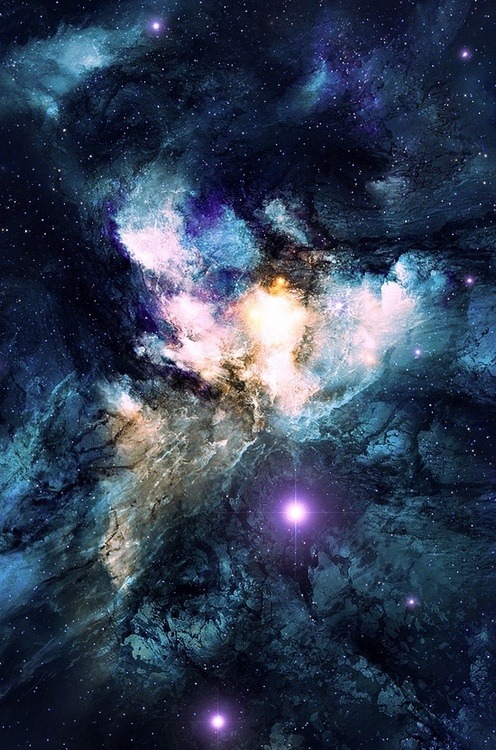

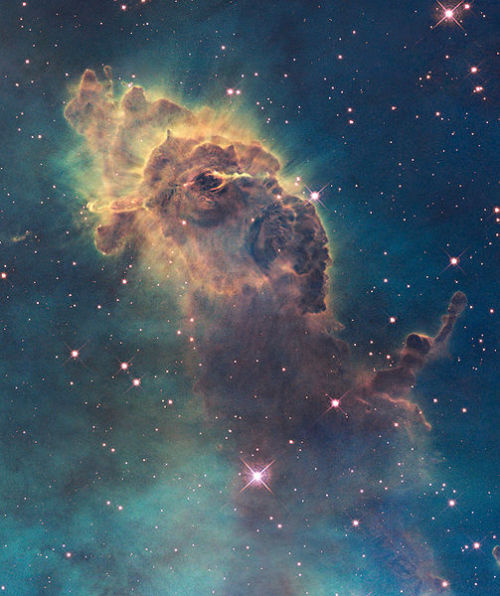
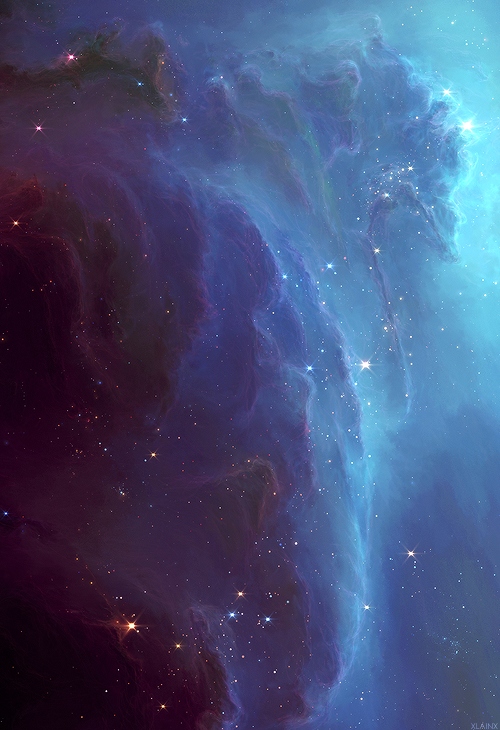

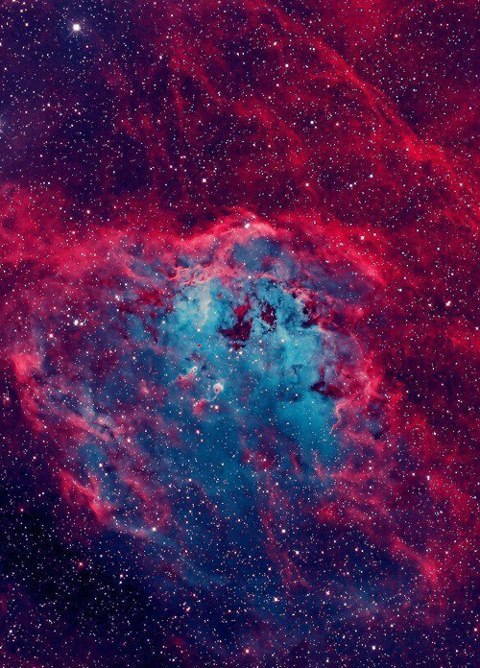
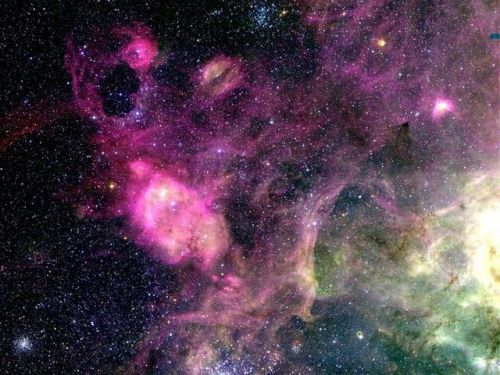



Young Wizards is my favorite book series because where else are you going to find a book where a twelve year old, an alien elf prince, a talking tree, and a crystal centipede all get together to do surgery on the sun.
Nita: I came out to find my pen and I'm honestly feeling so attacked right now.

Don’t forget you can preorder all sorts of cool goodies over at store.crossingscon.org! Preorders will be available for pickup at the Con next year. Treat yourself, you’ve earned it!
Technology drives exploration and we’re building on the Apollo program’s accomplishments to test and fly transformative, cutting edge technologies today for tomorrow’s missions. As we develop and test the new tools of 21st century spaceflight on the human path to Mars, we once again will change the course of history.



New observations of a ‘dust trap’ around a young star solve long-standing planet formation mystery Astronomers using the new Atacama Large Millimeter/submillimeter Array have imaged a region around a young star where dust particles can grow by clumping together. This is the first time that such a dust trap has been clearly observed and modeled. It solves a long-standing mystery about how dust particles in discs grow to larger sizes so that they can eventually form comets, planets and other rocky bodies.
Astronomers now know that planets around other stars are plentiful. But they do not fully understand how they form and there are many aspects of the formation of comets, planets and other rocky bodies that remain a mystery. However, new observations exploiting the power of ALMA are now answering one of the biggest questions: how do tiny grains of dust in the disc around a young star grow bigger and bigger—to eventually become rubble, and even boulders well beyond a metre in size?
Computer models suggest that dust grains grow when they collide and stick together. However, when these bigger grains collide again at high speed they are often smashed to pieces and sent back to square one. Even when this does not happen, the models show that the larger grains would quickly move inwards because of friction between the dust and gas and fall onto their parent star, leaving no chance that they could grow even further.
Somehow the dust needs a safe haven where the particles can continue growing until they are big enough to survive on their own. Such “dust traps” have been proposed, but there was no observational proof of their existence up to now.
Bottom left image: Artist’s impression of the proposed disk structure of Oph IRS 48. The brown spots represent the large and small grains. The larger grains detected by ALMA are concentrated in the dust trap at the bottom of the image. The blue represents the distribution of carbon monoxide gas. The gap in the disk is shown with the proposed planetary body that is sweeping the area clear and providing the conditions necessary to form the dust trap. Credit: Nienke van der Marel
Nienke van der Marel, a PhD student at Leiden Observatory in the Netherlands, and lead author of the article, was using ALMA along with her co-workers, to study the disc in a system called Oph-IRS 48. They found that the star was circled by a ring of gas with a central hole that was probably created by an unseen planet or companion star. Earlier observations using ESO’s Very Large Telescope had already shown that the small dust particles also formed a similar ring structure. But the new ALMA view of where the larger millimetre-sized dust particles were found was very different!
“At first the shape of the dust in the image came as a complete surprise to us,” says van der Marel. “Instead of the ring we had expected to see, we found a very clear cashew-nut shape! We had to convince ourselves that this feature was real, but the strong signal and sharpness of the ALMA observations left no doubt about the structure. Then we realised what we had found.”
What had been discovered was a region where bigger dust grains were trapped and could grow much larger by colliding and sticking together. This was a dust trap—just what the theorists were looking for.
Bottom right image: ALMA image of the dust trap around Oph IRS 48. The distinctive crescent-shaped feature comes from the accumulation of larger dust grains in the outer regions of the disk. This provides the safe haven dust grains need to grow into larger and larger objects. Credit: ALMA (ESO/NAOJ/NRAO) / Nienke van der Marel
As van der Marel explains: “It’s likely that we are looking at a kind of comet factory as the conditions are right for the particles to grow from millimetre to comet size. The dust is not likely to form full-sized planets at this distance from the star. But in the near future ALMA will be able to observe dust traps closer to their parent stars, where the same mechanisms are at work. Such dust traps really would be the cradles for new-born planets.”
The dust trap forms as bigger dust particles move in the direction of regions of higher pressure. Computer modelling has shown that such a high pressure region can originate from the motions of the gas at the edge of a gas hole—just like the one found in this disc.
“The combination of modelling work and high quality observations of ALMA makes this a unique project”, says Cornelis Dullemond from the Institute for Theoretical Astrophysics in Heidelberg, Germany, who is an expert on dust evolution and disc modelling, and a member of the team. “Around the time that these observations were obtained, we were working on models predicting exactly these kinds of structures: a very lucky coincidence.”
The observations were made while the ALMA array was still being constructed. They made use of the ALMA Band 9 receivers—European-made devices that allow ALMA to create its so far sharpest images.
“These observations show that ALMA is capable of delivering transformational science, even with less than half of the full array in use,” says Ewine van Dishoeck of the Leiden Observatory, who has been a major contributor to the ALMA project for more than 20 years. “The incredible jump in both sensitivity and image sharpness in Band 9 gives us the opportunity to study basic aspects of planet formation in ways that were simply not possible before.”
gUYS VOYAGER 1 IS CONFIRMED OUT OF THE SOLAR SYSTEM WE’VE BROKEN OUT OF THE SOLAR SYSTEM THIS IS REALLY COOL

ya meme // nine quotes
the wizard’s oath (young wizards by diane duane)
-
 tt-squid reblogged this · 3 years ago
tt-squid reblogged this · 3 years ago -
 bossanova001 reblogged this · 4 years ago
bossanova001 reblogged this · 4 years ago -
 charlie-boyle liked this · 5 years ago
charlie-boyle liked this · 5 years ago -
 superlucyjin reblogged this · 5 years ago
superlucyjin reblogged this · 5 years ago -
 spy-goth liked this · 5 years ago
spy-goth liked this · 5 years ago -
 ageorgebir liked this · 8 years ago
ageorgebir liked this · 8 years ago -
 curiousandapathetic reblogged this · 8 years ago
curiousandapathetic reblogged this · 8 years ago -
 myszagrace reblogged this · 8 years ago
myszagrace reblogged this · 8 years ago -
 uraneplunia-blog liked this · 8 years ago
uraneplunia-blog liked this · 8 years ago -
 pterasawr liked this · 8 years ago
pterasawr liked this · 8 years ago -
 coconutxraikage liked this · 8 years ago
coconutxraikage liked this · 8 years ago -
 magkevin86 liked this · 8 years ago
magkevin86 liked this · 8 years ago -
 bangtanlovesbangtan reblogged this · 8 years ago
bangtanlovesbangtan reblogged this · 8 years ago -
 spontaneousglitterbees reblogged this · 8 years ago
spontaneousglitterbees reblogged this · 8 years ago -
 stormypines reblogged this · 8 years ago
stormypines reblogged this · 8 years ago -
 wherethereareoctobers liked this · 8 years ago
wherethereareoctobers liked this · 8 years ago -
 snickerdoodlles reblogged this · 8 years ago
snickerdoodlles reblogged this · 8 years ago -
 snickerdoodlles liked this · 8 years ago
snickerdoodlles liked this · 8 years ago -
 cloneddragon liked this · 8 years ago
cloneddragon liked this · 8 years ago -
 inthedeepdeepocean liked this · 8 years ago
inthedeepdeepocean liked this · 8 years ago -
 universenbummler liked this · 8 years ago
universenbummler liked this · 8 years ago -
 arahku reblogged this · 8 years ago
arahku reblogged this · 8 years ago -
 everything-is-a-sausage reblogged this · 8 years ago
everything-is-a-sausage reblogged this · 8 years ago -
 aurltas liked this · 8 years ago
aurltas liked this · 8 years ago -
 theunearthlyfool liked this · 8 years ago
theunearthlyfool liked this · 8 years ago -
 outofambit reblogged this · 8 years ago
outofambit reblogged this · 8 years ago -
 haveievermentioned reblogged this · 8 years ago
haveievermentioned reblogged this · 8 years ago -
 dementedfurbie reblogged this · 8 years ago
dementedfurbie reblogged this · 8 years ago -
 dementedfurbie liked this · 8 years ago
dementedfurbie liked this · 8 years ago -
 kira-r2d2-blog liked this · 8 years ago
kira-r2d2-blog liked this · 8 years ago -
 astro-leigh-blog liked this · 8 years ago
astro-leigh-blog liked this · 8 years ago -
 with-a-glass-of-mimosa reblogged this · 8 years ago
with-a-glass-of-mimosa reblogged this · 8 years ago -
 cactbi reblogged this · 8 years ago
cactbi reblogged this · 8 years ago -
 radacefriend reblogged this · 9 years ago
radacefriend reblogged this · 9 years ago -
 radacefriend liked this · 9 years ago
radacefriend liked this · 9 years ago -
 frosty1723 liked this · 9 years ago
frosty1723 liked this · 9 years ago
A personal temporospatial claudication for Young Wizards fandom-related posts and general space nonsense.
288 posts



